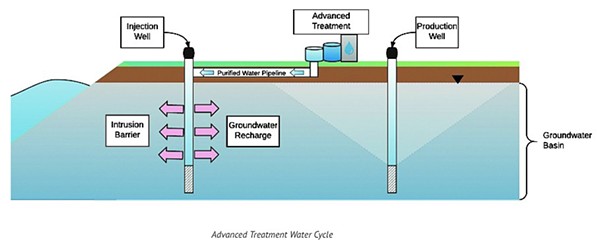[{
"name": "Ad - Medium Rectangle CC01 - 300x250",
"id": "AdMediumRectangleCC01300x250",
"class": "inlineCenter",
"insertPoint": "8",
"component": "2963441",
"requiredCountToDisplay": "12"
},{
"name": "Ad - Medium Rectangle LC01 - 300x250",
"id": "AdMediumRectangleCC01300x250",
"class": "inlineCenter",
"insertPoint": "18",
"component": "2963441",
"requiredCountToDisplay": "22"
},{
"name": "Ad - Medium Rectangle LC09 - 300x250",
"id": "AdMediumRectangleLC09300x250",
"class": "inlineCenter",
"insertPoint": "28",
"component": "3252660",
"requiredCountToDisplay": "32"
}]
The Central Coast Blue project is rolling closer to takeoff after Grover Beach approved the cost-sharing agreement, marking a milestone in a long-deliberated regional effort to curb southern San Luis Obispo County's water problems.
"This is an incredibly important project, a project that the entire county is looking at to see how we can improve water resiliency, and how we can work together as communities in order to do it," said Grover Beach City Manager Matthew Bronson at the Feb. 15 City Council meeting.
The council unanimously approved a cost-sharing agreement that details the price breakdown among Grover Beach, Pismo Beach and Arroyo Grande—the three South County cities are banding together to inject treated wastewater into the Santa Maria Valley Groundwater Basin through the Central Coast Blue project. Led by Pismo Beach, their efforts are meant to protect the basin from seawater intrusion and drought. With Arroyo Grande greenlighting the cost-share in late January, both cities now anticipate Pismo Beach's approval in March. Project construction is expected to begin in 2023, and could take two years to complete.
Grover Beach also authorized Bronson to apply for a State Revolving Fund loan from the State Water Resources Control Board. The loan amount hasn't been determined yet, and the city plans to repay it through its water revenue.
"Our approved water rates are expected to provide sufficient funding to pay for the city's share of the Central Coast Blue project costs. We anticipate that up to 75 percent of the project costs could be funded through state and federal grants," Bronson told New Times. "The low-interest State Revolving Fund loan would help finance the remainder of the costs, and could potentially lower water rates compared to paying for the cost of construction directly."
In early 2021, the estimated project cost to be split among the three cities was $38 million. It has since jumped to more than $50 million, roughly a third of which Grover Beach has to foot, totaling up to almost $18 million. Greg Ray, the city's public works director, told the council that Grover Beach would own 36 percent of the 1,000 acre feet of water injected into the basin.
But a member of the public was quick to do the math. Grover Beach resident Sean Lee questioned the rising cost of the project, and informed the City Council that each acre-foot of water would cost Grover Beach $50,000.
"We're getting approximately 350 acre-feet a year, and what is cost per acre-foot after 20 years? What is the cost [for] each individual, and how is that cost going to be assessed? We have a rolling situation here, but no grasp as to where this project will end up," Lee said at the meeting.
Ray explained that though the first year would be expensive, $50,000 makes up the construction, property acquisition and design costs. The current estimated cost per acre-foot after introducing recycled water to the basin stands at $2,500.
Lee asked about alternative options such as desalinating "unlimited water" from the San Luis Bay, but Ray didn't think it was viable.
"The development of this project ... comes on the heels of roughly 20 years of study, of which I've been involved in almost all 20," Ray replied. "We steered away from desalination as the preferred alternative primarily because of cost. It's similar in per acre-foot cost, in design, and construction. But the ongoing long-term cost ... is quite a bit more, and the regulatory environment for desalination is not favorable."
Bronson told New Times that the city's current water rate structure also has a 2 to 4 percent customer cost spike over a five-year period because of the Central Coast Blue project and the increased cost of producing water from existing depleting sources.
"However, 70 percent of residential households had a decrease in total water and sewer rates due to a new tiered rate structure where customers with higher water usage pay a higher unit cost," he explained. "The average household customer in Grover Beach pays the second lowest water and sewer rate among other cities and communities in the county." Δ
Latest in News
Readers also liked…
-

Coast Unified teachers upset over new position's salary and qualifications
Oct 20, 2022 -

SLO police identify alleged driver who hit and killed couple
Dec 22, 2022 -

When the levee breaks: Oceano residents, county officials walk a tightrope of regulations to manage Arroyo Grande Creek, which some say led to the levee's failure in January
May 18, 2023










